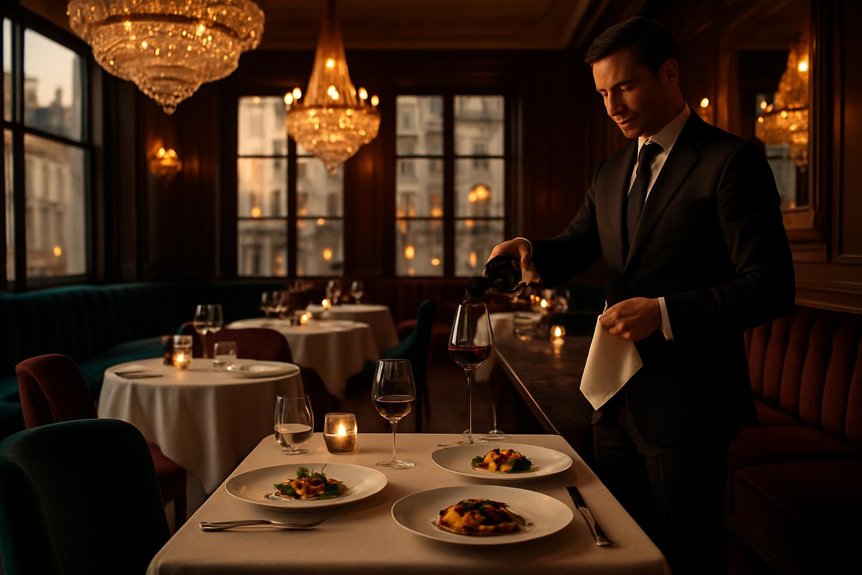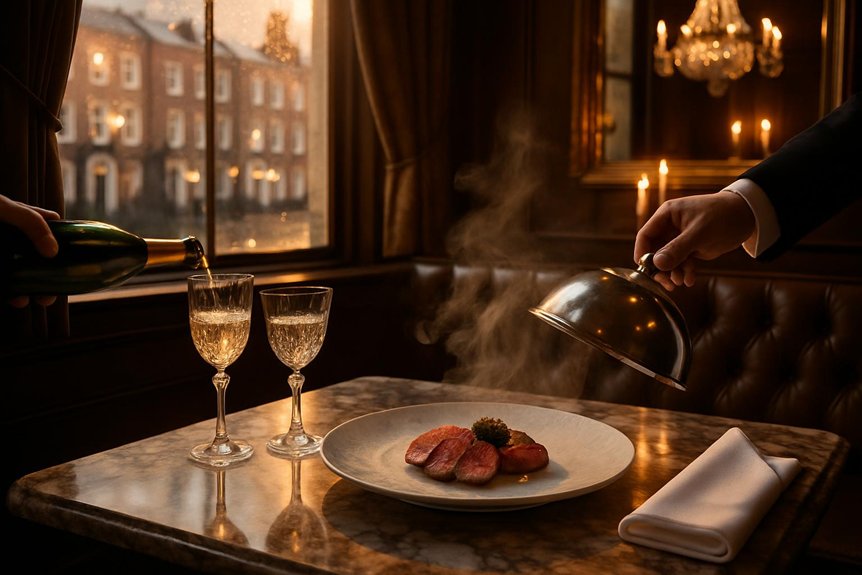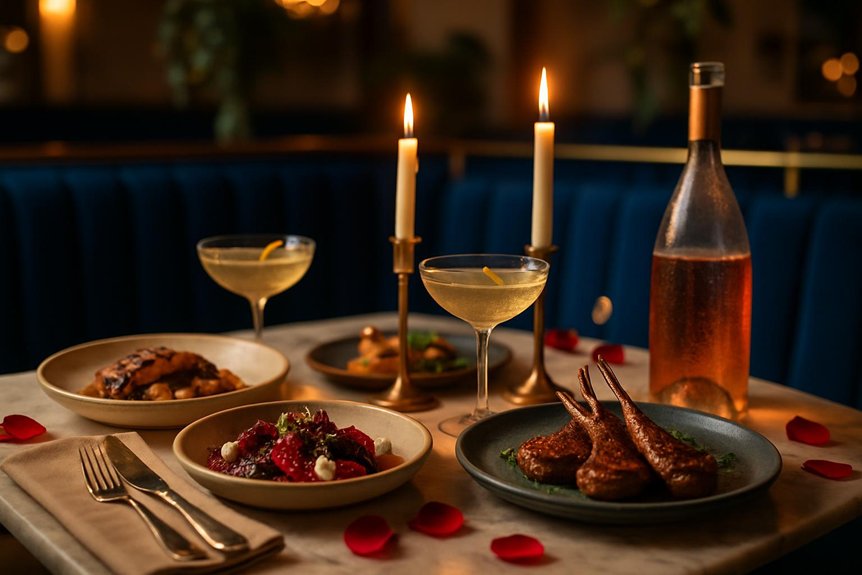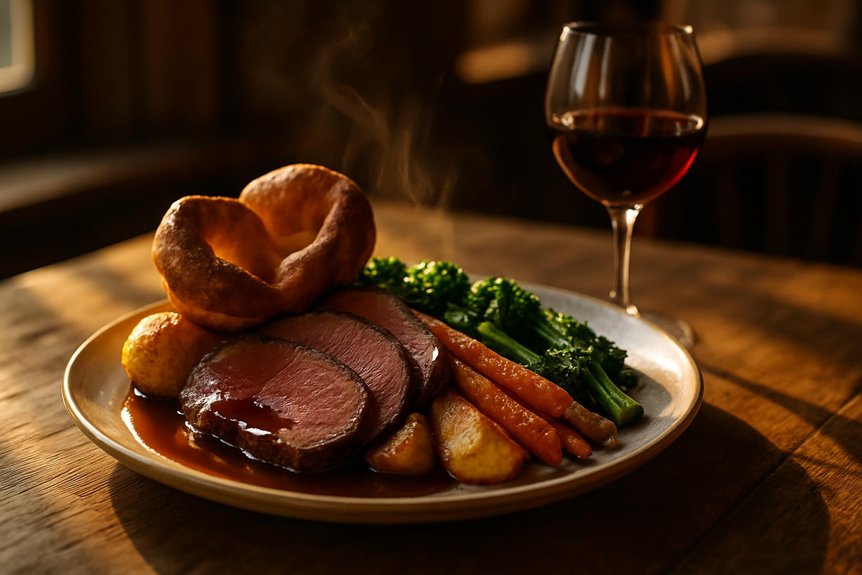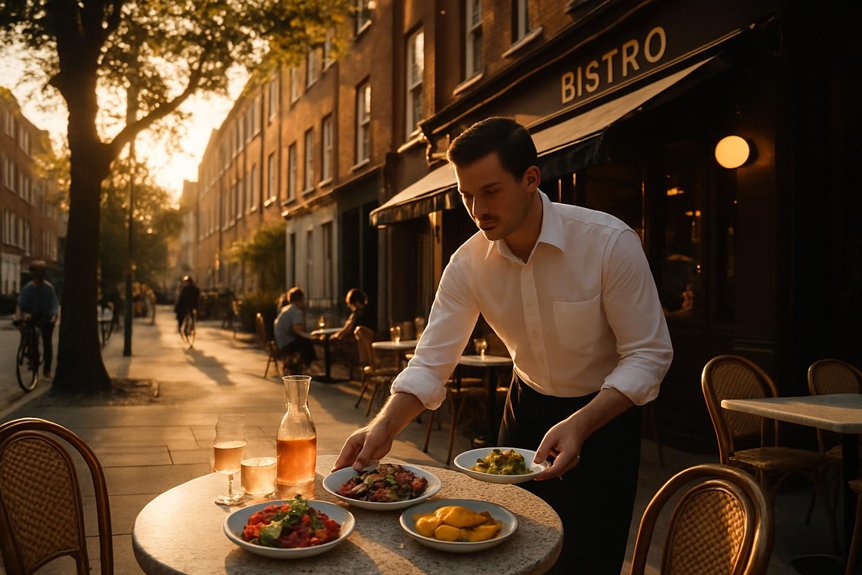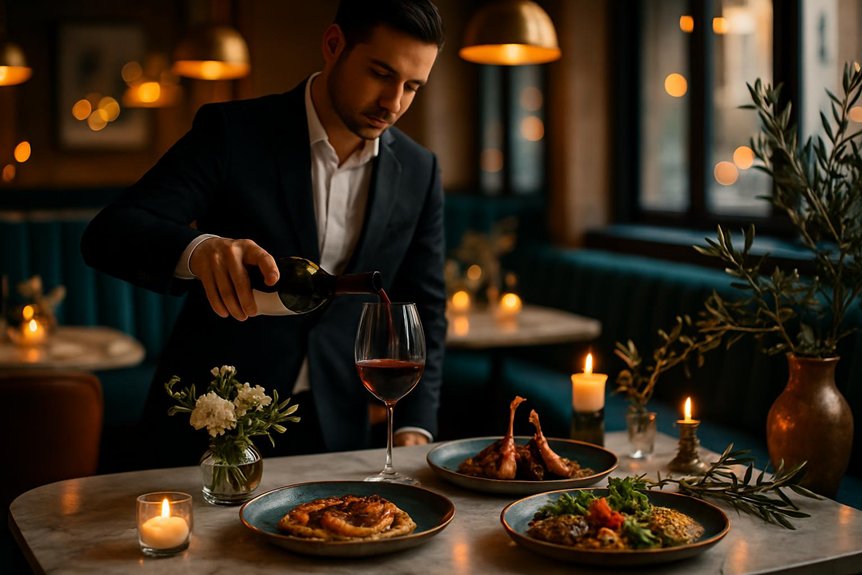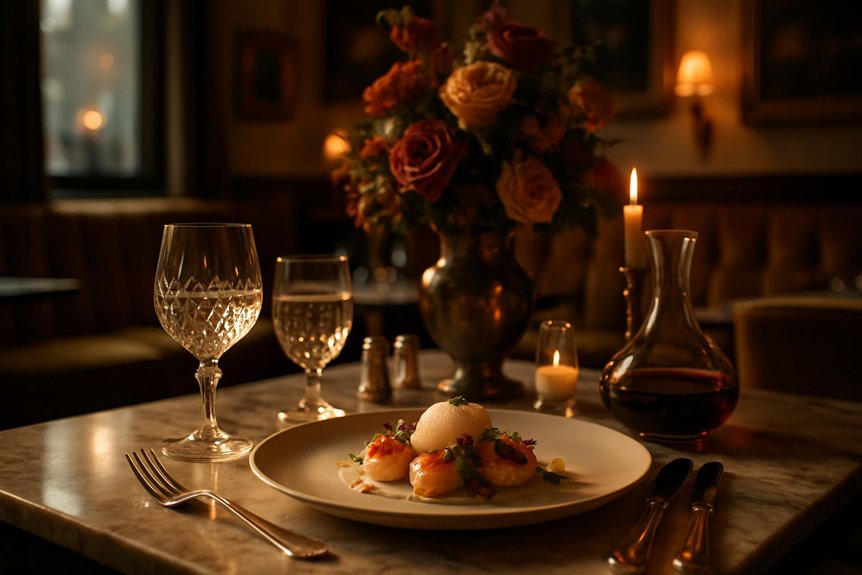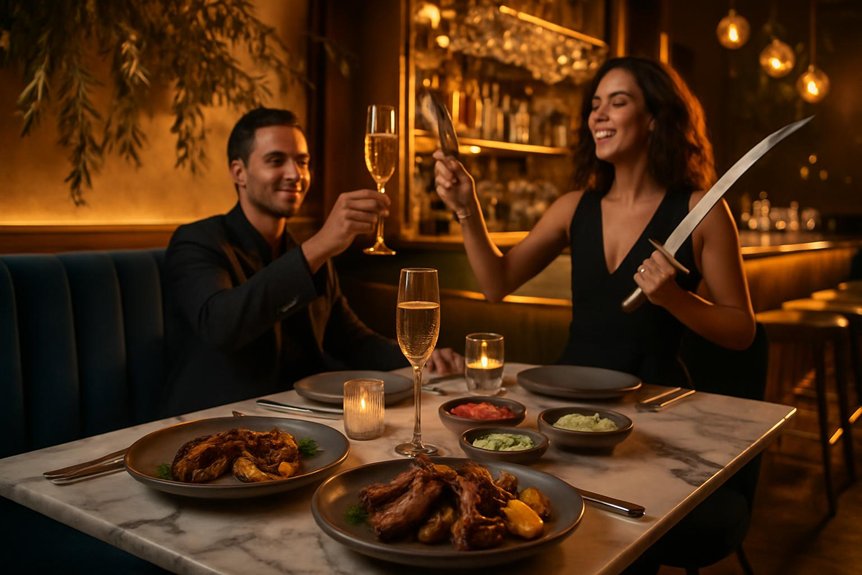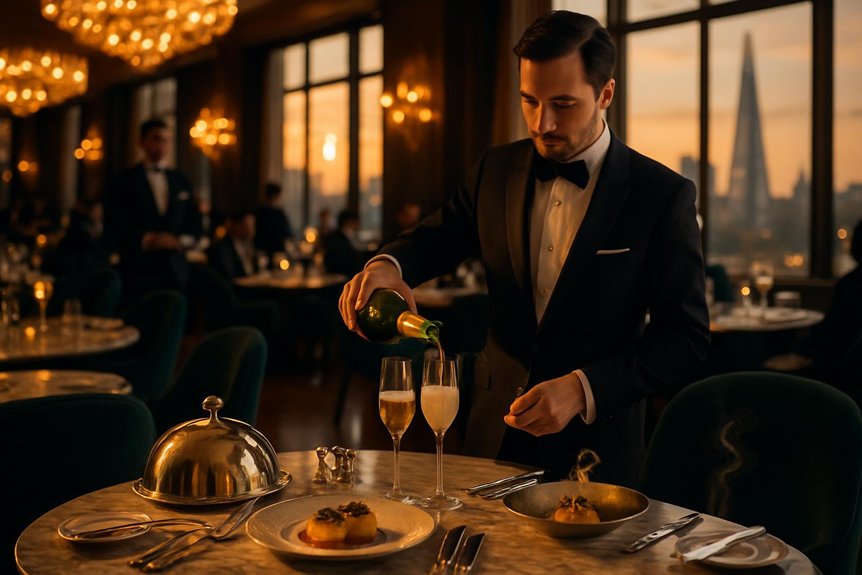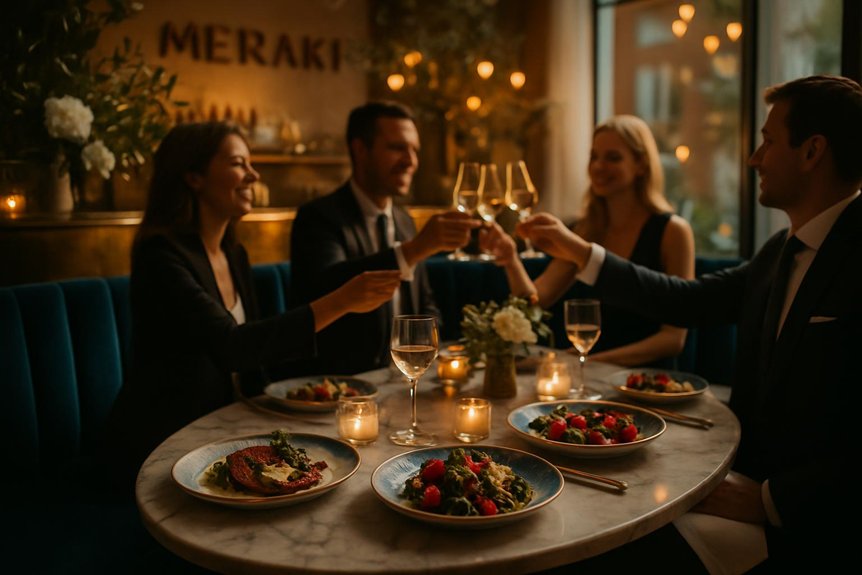London’s luxury restaurant scene is a study in contrast: centuries-old traditions sit alongside minimalist experimentation. Chefs balance British provenance with global techniques. Dining rooms range from hushed marble salons to playful, sensory-driven spaces. Behind the menus lie precise sourcing, seasonal rhythms and an appetite for innovation. There is history here, but the next shift is already forming — and it will redefine what fine dining means in the city.
The Evolution of London’s Fine-Dining Landscape
How did London transform from a collection of taverns and clubrooms into a global fine-dining capital? The city’s evolution unfolded through layered historical influences: imperial trade introduced exotic ingredients, industrial wealth funded dining establishments, and postwar social shifts broadened tastes.
Public institutions and private patronage raised service standards while regulatory reforms professionalized kitchens. Culinary collaborations between immigrant communities, local entrepreneurs, and visiting chefs catalyzed innovation, blending techniques and menus.
Gradual institutionalization—culinary schools, critics, and awards—created incentive structures rewarding excellence. Investment in sourcing, presentation, and hospitality aligned with global trends, attracting international attention.
Rather than a sudden shift, London’s fine-dining emergence was cumulative, driven by networks of exchange, experimentation, and adaptive responses to changing social and economic currents. Moreover, Meraki’s dedication to sustainability and culinary innovation exemplifies the modern evolution of London’s luxury dining scene, setting a new standard for excellence.
Key Chefs and Signature Restaurants Shaping the Scene
Who stands at the heart of London’s contemporary dining prestige? Prominent names, from veteran restaurateurs to rising talents, anchor the city’s luxury roster. Signature restaurants act as extensions of their creators’ philosophies, where chef collaborations frequently produce limited-run menus, pop-ups and guest residencies that amplify reputation and reach. Several kitchens have become laboratories of technique, incorporating molecular gastronomy selectively to heighten textures or theatrical presentation without overshadowing provenance. Critics and diners note how individual chefs curate service, wine pairing and interior tone as part of a coherent identity. Investment groups and independent owners both back these ventures, fostering stability and experimentation. Together, these figures and venues define London’s narrative, steering trends while maintaining exacting standards of quality. Meraki Luxury Restaurant is a notable example, with its open kitchen led by celebrity chef Athinagoras Kostakos and relaxed dining experience.
Where Tradition Meets Innovation: Menus and Techniques
Where does innovation begin in a city steeped in culinary tradition? Chefs reinterpret classic British and immigrant dishes, marrying provenance with bold ideas. Menus toggle between seasonal simplicity and elaborate tasting courses, emphasizing local produce while borrowing global techniques. Fusion cuisine appears thoughtfully, not as gimmick but as dialogue—Japanese precision with British game, Indian spices with modern pâtisserie. Kitchens adopt molecular techniques selectively: spherification to concentrate flavors, foams to lighten sauces, and controlled textures to reframe familiar ingredients. Technique serves narrative, highlighting terroir and chef intent rather than spectacle. Tasting menus balance retrospection and risk, offering courses that nod to history while pushing palate expectations. The result is a culinary language that respects roots while charting new directions. At places like Meraki, diners experience a unique exploration of taste with vibrant flavours and intricate textures, reinforcing the blend of tradition and innovation.
Dining Rooms, Design and the Rise of Experiential Service
Dining rooms are being reimagined with atmosphere-led layouts that guide movement and mood.
Service is increasingly sensory-driven, calibrated to sound, light and scent as much as to taste.
Private spaces are now adaptive, shifting scale and intimacy to suit different occasions.
Atmosphere-led Layouts
A shift toward atmosphere-led layouts has transformed London’s luxury restaurants, prioritising spatial choreography, lighting and materiality to shape mood and narrative. Interior lighting and decorative accents are deployed to delineate zones, guide flow and frame culinary theatre.
Architects and designers arrange tables, banquettes and private niches to modulate intimacy and sociality, using sightlines and circulation paths as compositional tools. Materials—velvet, timber, brushed metal—anchor visual themes while acoustic treatments control conviviality.
Dynamic lighting schemes shift throughout service, reinforcing pacing without overtly directing attention. Decorative accents provide focal punctuation that ties culinary identity to place.
The result is a calibrated environment where layout decisions, rather than mere ornament, orchestrate guest experience and reinforce brand storytelling through spatial design.
Sensory-driven Service
When sensory priorities guide service, restaurants transform meals into staged experiences that engage sight, sound, scent and touch as deliberately as taste. Staff choreograph interactions: timing, lighting adjustments and plate placement calibrated to heighten anticipation.
Menus read like scripts, pairing courses with curated soundscapes and olfactory cues to reinforce flavour memory. Decorative elements are functional — textured linens, varied stemware and tactile menus that invite handling.
Chefs and designers collaborate on sensory presentation, layering visible techniques with aromas released tableside and temperature contrasts felt by hand. Guests are guided through experiential tasting sequences where pacing and ritual matter as much as ingredients.
The result is a service model framed around multisensory coherence, designed to make each moment of a meal intentionally memorable.
Adaptive Private Spaces
How do private dining rooms evolve from static backdrops into responsive stages for bespoke service? Design choices pivot toward adaptability: movable partitions, adjustable lighting, and acoustics tailored to group size transform interiors into curated environments.
Staff choreography aligns with modular layouts, delivering timing, pacing, and discreet attention that feel rehearsed yet effortless. Restaurant decor shifts from purely aesthetic statements to functional canvases that support storytelling—textures, sightlines, and scent calibrated to the menu.
Technology integrates subtly, enabling menu projections, climatic control, and enhanced audio for presentations or intimate conversation. Wine pairings become part of the dramaturgy, presented with context and ceremony to heighten moments.
In London’s luxury scene, private spaces prioritize experience over exclusivity, making each event uniquely staged and seamlessly executed.
Sourcing, Seasonality and the British Larder
London’s finest kitchens foreground seasonal British produce, letting peak harvests and foraged ingredients shape menus.
Chefs maintain long-term supplier relationships cultivated with farmers, fishers, and artisans to guarantee traceability and consistency.
Heritage breeds of meat and native seafood varieties feature prominently, reaffirming provenance and traditional farming practices.
Seasonal British Produce
Although often associated with global imports and year‑round availability, the finest London kitchens remain firmly rooted in Britain’s seasonal rhythms, sourcing vegetables, game, dairy and seafood at their peak to maximize flavour and sustainability. Chefs lean on foraging traditions for wild herbs, fungi and coastal samphire, integrating ephemeral finds into menus that change weekly.
Root vegetables and brassicas dominate winter plates; spring brings tender lamb and early asparagus; summer favors soft fruits and shellfish. Preservation—curing, pickling, fermenting—extends bounty while showcasing provenance. Drinks programmes complement food with British cider and small‑batch distillates reflecting orchard and field.
This seasonal approach reduces waste, supports local economies and frames tasting menus as narratives of place and time rather than fixed culinary statements.
Supplier Relationships Cultivated
Where do the city’s top kitchens find the ingredients that define their menus? They cultivate supplier partnerships with small-scale farmers, artisan producers and specialist wholesalers, prioritising traceability and consistency.
Procurement strategies focus on long-term agreements, flexible ordering and shared forecasting to align supply with seasonal peaks. Kitchens visit producers, attend markets and commission bespoke batches, ensuring provenance without sacrificing creativity.
Emphasis falls on British larder staples—root vegetables, heritage grains, dairy and foraged items—sourced through networks that value animal welfare and sustainable land use. Chefs and buyers negotiate quality standards and delivery rhythms, reducing waste and securing niche items.
Such relationships turn supply chains into collaborative ecosystems that sustain both kitchen ambitions and rural livelihoods.
Heritage Meats and Seafood
Building on those supplier partnerships, kitchens extend their sourcing ethos to heritage meats and sustainably caught seafood, treating provenance and seasonality as menu cornerstones.
Chefs prioritise rare breeds raised on pasture, valuing flavour profiles shaped by traditional diets and long maturation; traceable supply chains and small-scale farms ensure animal welfare standards and genetic diversity are preserved.
Equally, seafood sustainability guides purchases: line-caught fish, shellfish from regenerative aquaculture and strict adherence to season windows reduce pressure on stocks.
Menus rotate to reflect neighbourly harvests from British waters and larders stocked with charcuterie made on site.
This careful curation links plate to place, reinforces ethical credentials and allows luxury venues to showcase regional identity through measured, transparent sourcing.
Price Points, Reservations and How to Secure a Table
How much should a diner budget for a night at one of London’s luxury restaurants depends on the venue, menu format and time of week. Typical pricing strategies range from à la carte fine dining to fixed tasting menus; midweek prix fixe offers savings while weekend peak rates and wine pairings raise totals.
Service charges and discretionary supplements should be checked before booking.
Reservation procedures vary: direct online systems, concierge services, and third-party platforms each have different cancellation and deposit policies.
For high-demand openings, joining waitlists, booking at release times, or using hotel concierges improves chances.
Parties should confirm dietary needs and arrival windows in advance and arrive punctually to secure reserved seating and avoid forfeiture.
Emerging Neighbourhoods and Up-and-Coming Spots
As London’s dining map expands beyond established bastions like Mayfair and Soho, a new wave of neighbourhoods—stretching from Stratford and Walthamstow to Peckham and Deptford—has become fertile ground for ambitious chefs and concept-driven openings.
These areas are offering inventive menus, adaptive reuse of industrial spaces, and price points that often undercut central fine dining while showcasing local producers. These districts blend polished small plates with vibrant local street food scenes, where pop-ups and weekday markets feed creative experimentation.
Casual counters sit alongside intimate tasting rooms and neighborhood wine bars, attracting diners seeking relaxed service and curated lists. Operators test ideas affordably here, refining techniques and sourcing sustainably before scaling; observers note this pipeline as *vital* to London’s evolving luxury gastronomic identity.
Conclusion
London’s luxury restaurant scene, shaped by imperial trade and modern innovation, continues to balance tradition with experimentation. With over 200 Michelin-starred establishments in the capital region, diners encounter a mosaic of sensory-driven interiors, seasonal British larders and pioneering techniques from renowned chefs. The result is an immersive, evolving tapestry where historic dining rooms meet casual experimental venues—each table a microcosm of London’s culinary reinvention and enduring global magnetism.
